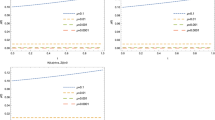Abstract
THE possibility that some important quantitative characters of higher organisms may be subject to multigene families such as that of immunoglobulin variable parts1, poses the problem of reformulation on some of the population genetics theory. The two remarkable characteristics of multigene families as shown by Hood and others1–3—the contraction and expansion of the gene number in a family and the coincidental evolution—should now be seriously taken into account in the theoretical investigation of the evolution of higher organisms. In addition, the unit of natural selection is the family itself rather than individual mutant genes. The model of unequal crossing-over provides one of the most satisfactory explanations for the coincidental evolution1–4. In this model, the gene lineage gradually expands or contracts within a family mainly by intrachromosomal unequal crossovers. I have shown5 that the dynamics of a gene lineage within a chromosome under this model and some other models is analogous to that of a mutant gene in finite populations using the diffusion model of Kimura6. Here I present the equilibrium properties of genetic variation of multigene families under simplifying assumptions and show that natural selection may be quite effective in keeping a large amount of variation in the family such as that of variable parts of immunoglobulins.
Similar content being viewed by others
References
Hood, L., Campbell, J. H. & Elgin, S. C. R. A. Rev. Genet. 9, 305–353 (1975).
Hood, L. E., Wilson, J. H. & Wood, W. B. Molecular Biology of Eucaryotic Cells (Benjamin, Menlo Park, 1975).
Tartof, K. D. A. Rev. Genet. 9, 355–385 (1975).
Smith, G. P. Cold Spring Harb. Symp. quant. Biol. 38, 507–513 (1974).
Ohta, T. Nature 263, 74–76 (1976).
Kimura, M. J. appl. Probability 1, 177–232 (1964).
Kimura, M. & Crow, J. F. Genetics 49, 725–738 (1964).
Smith, G. P. Science 191, 528–535 (1976).
Fisher, R. A. The Genetical Theory of Natural Selection (Clarendon, Oxford, 1930).
Stewart, F. M. Theor. Pop. Biol. 9, 188–201 (1976).
Capra, J. D. & Edmundson, A. B. Sci. Am. 236, 50–59 (1977).
Author information
Authors and Affiliations
Rights and permissions
About this article
Cite this article
OHTA, T. Genetic variation in multigene families. Nature 267, 515–517 (1977). https://doi.org/10.1038/267515a0
Received:
Accepted:
Issue Date:
DOI: https://doi.org/10.1038/267515a0
- Springer Nature Limited
This article is cited by
-
A computer simulation of evolutionary forces controlling the size of a multigene family
Journal of Molecular Evolution (1980)





